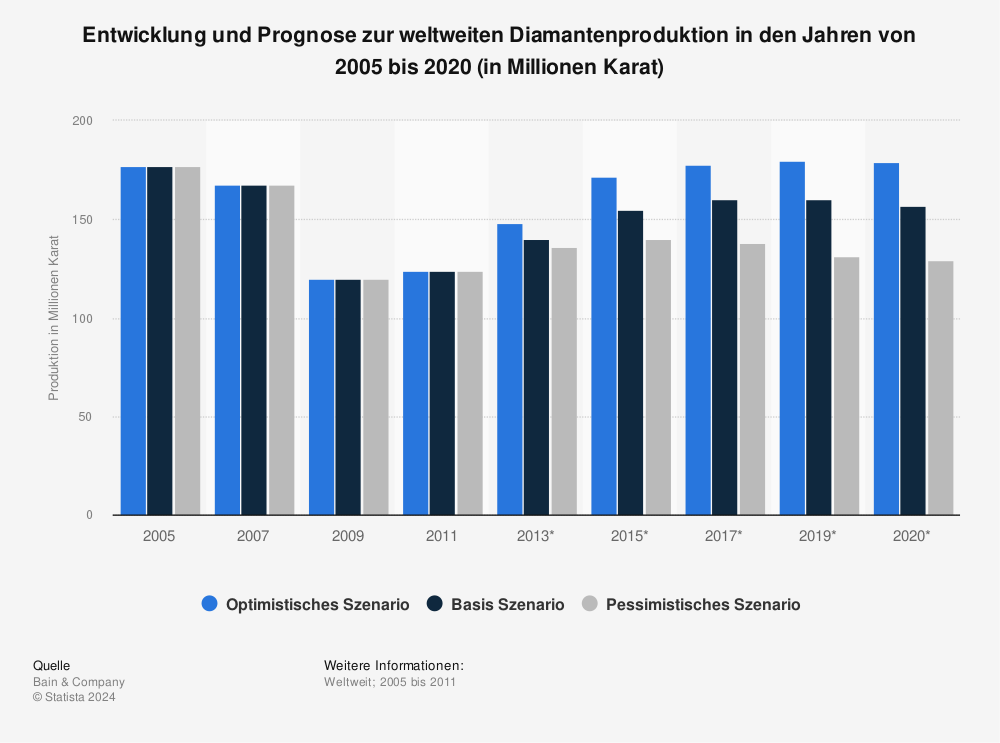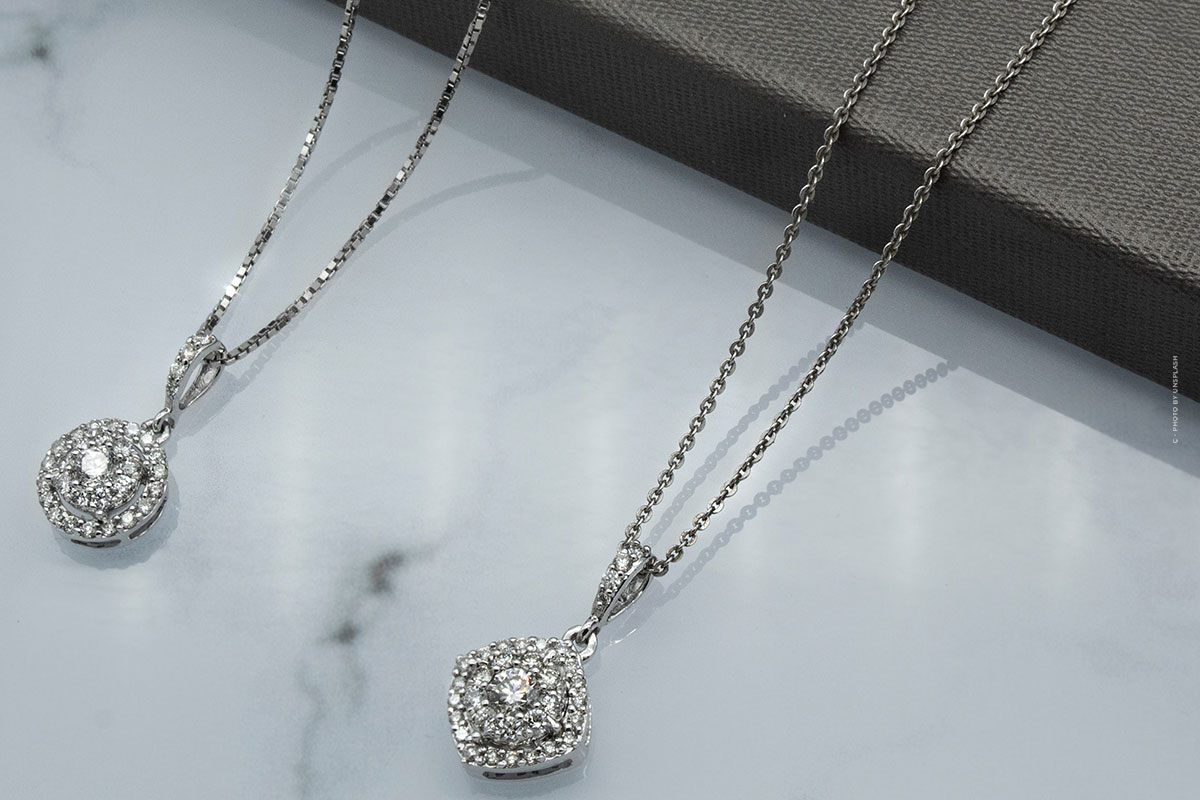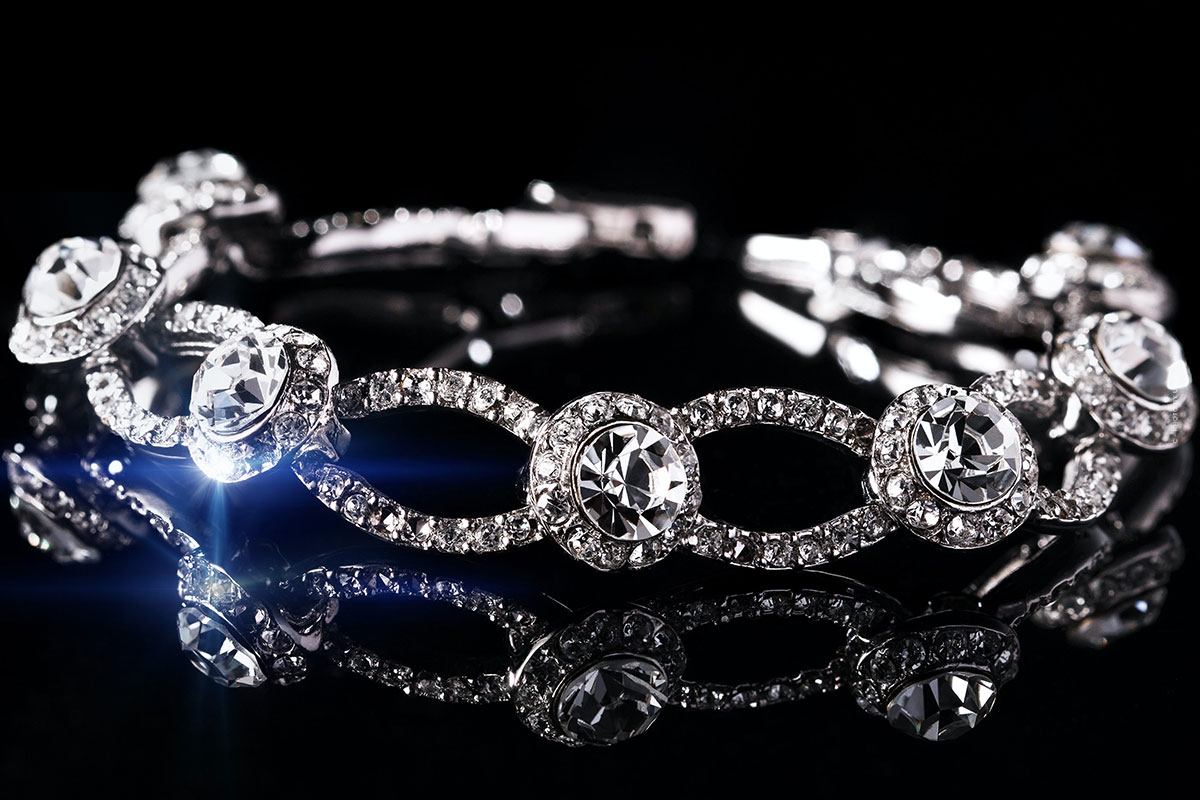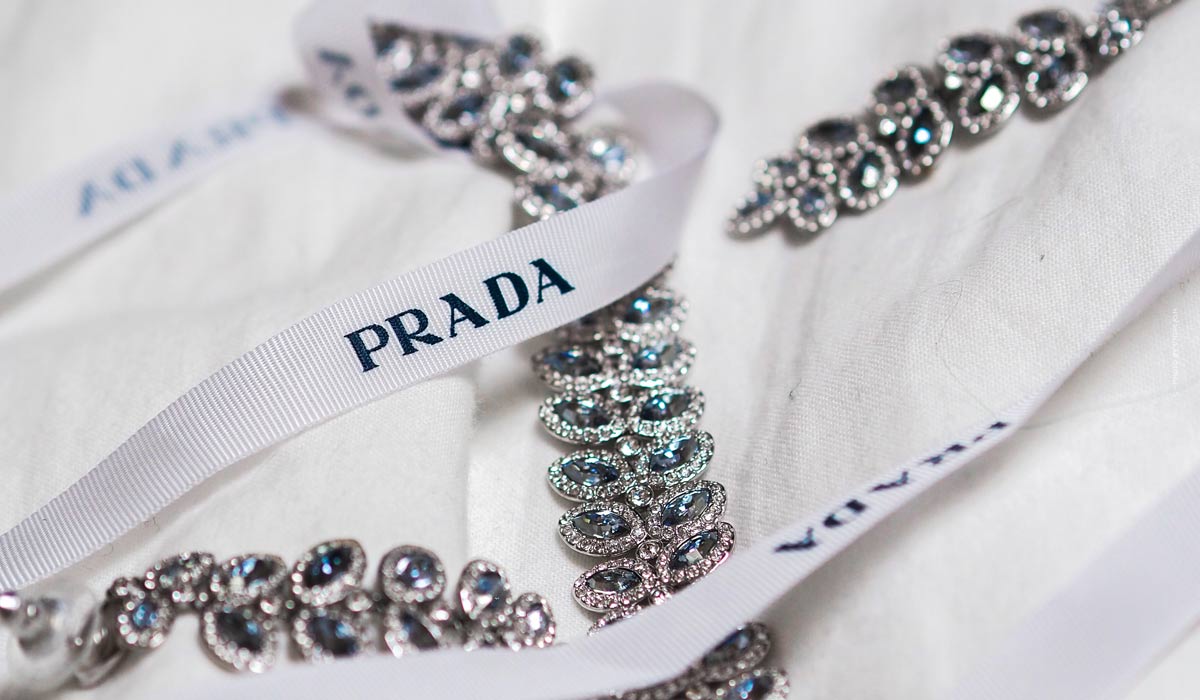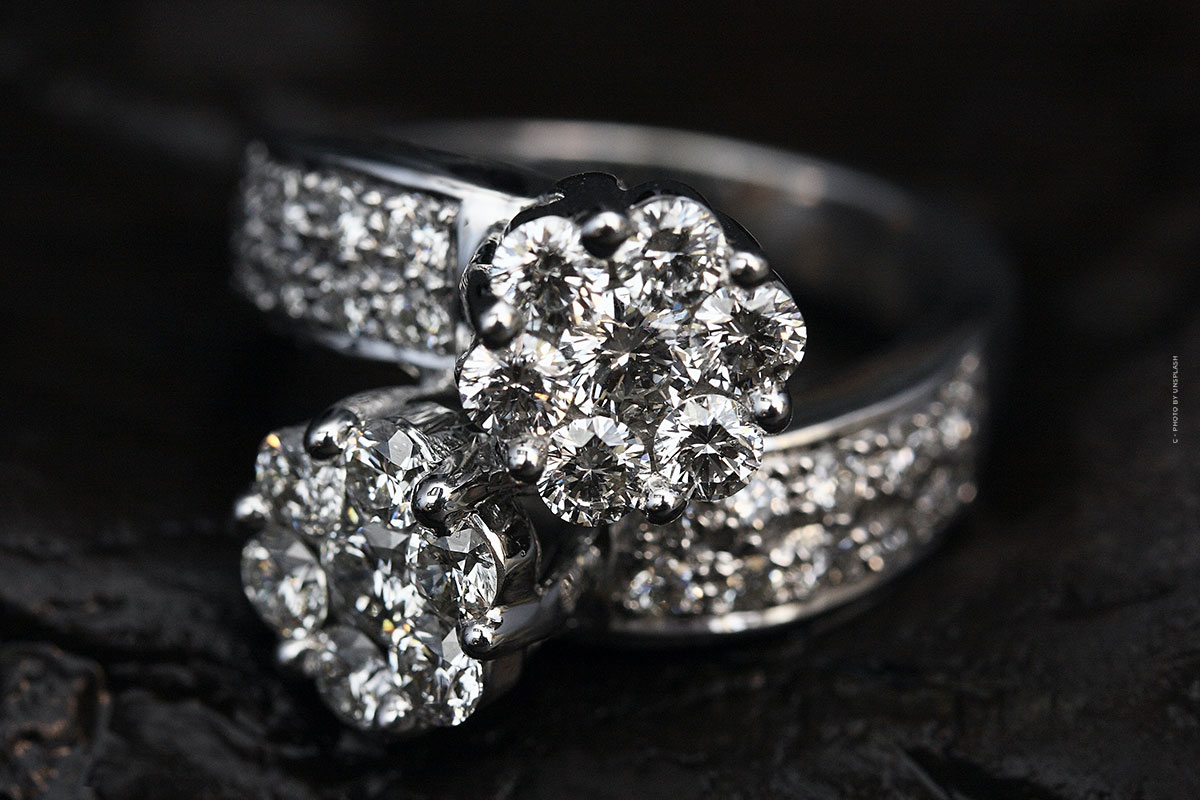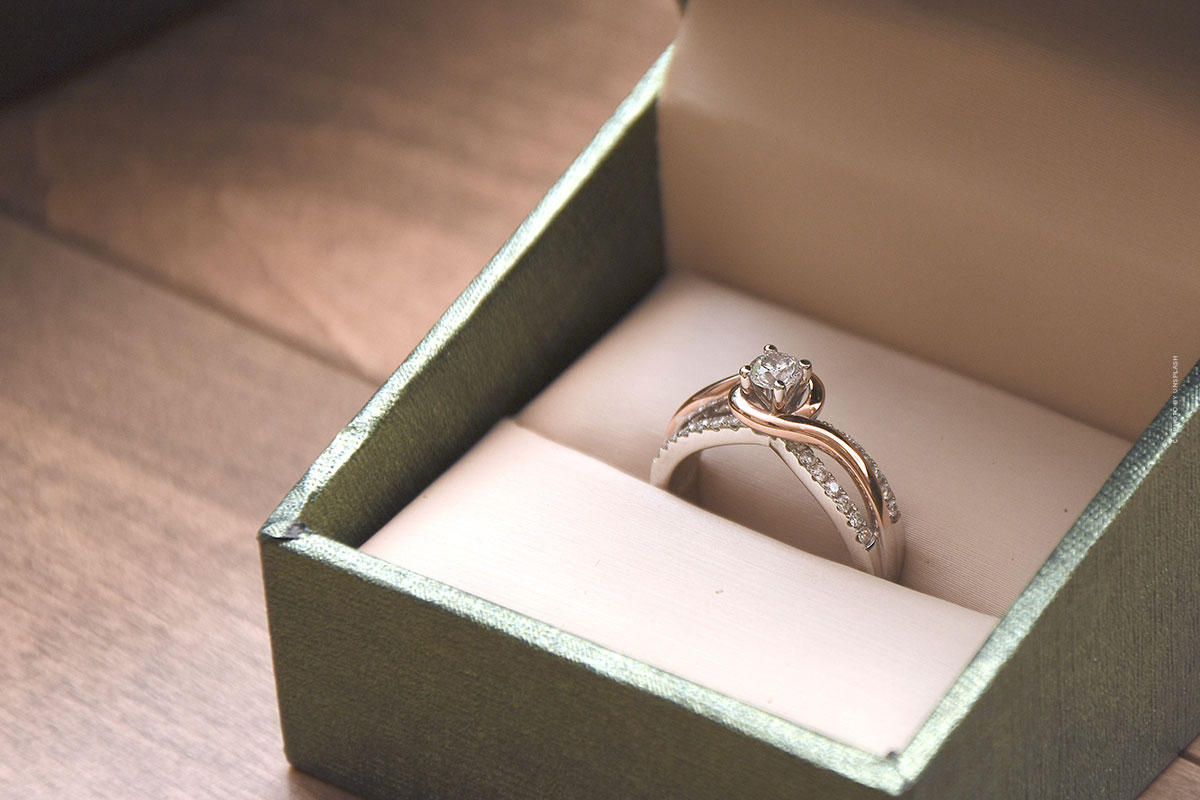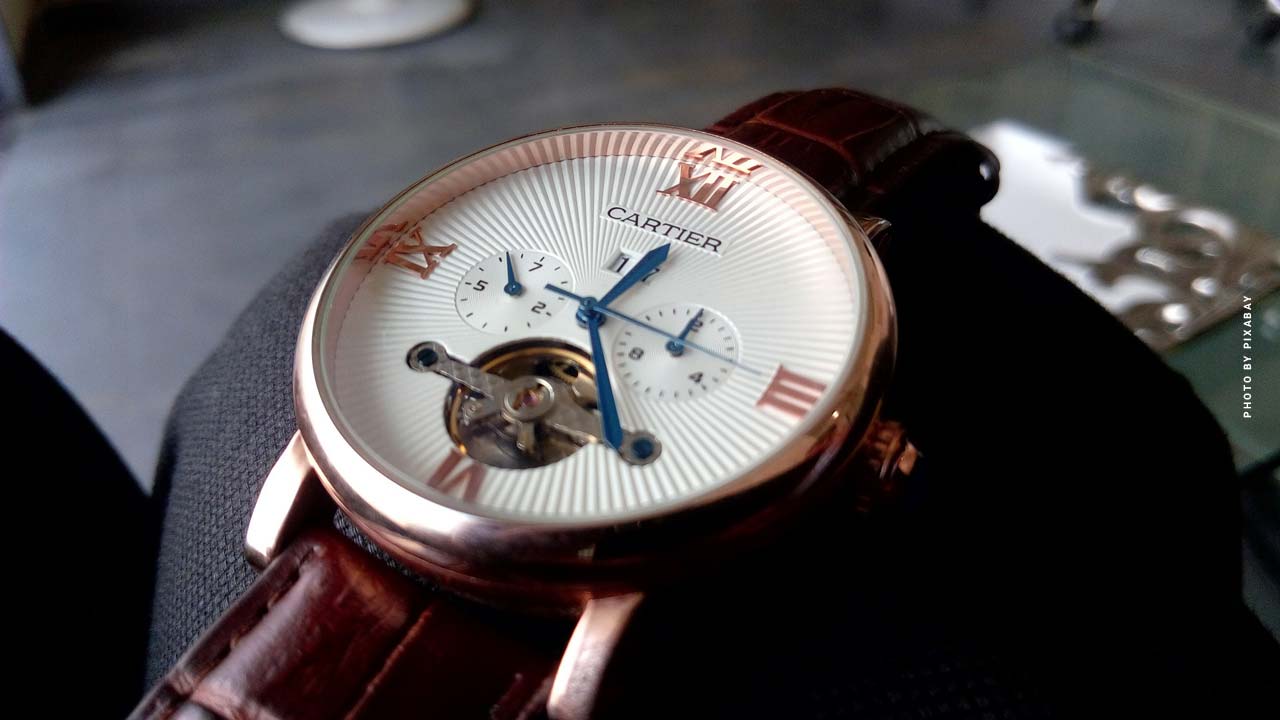Investment Diamond: Carat & Certificate
Diamonds offer protection against inflation, bank failures, stock market crashes and currency reforms. Diamonds are considered the most precious stones in the world. Their processing in precision around diamond cut and light refraction occupies mankind since their first discoveries. But although scientifically and historically a lot of information about diamonds has been brought to light, outside of connoisseur and enthusiast circles only a few know anything about the origin and history of these precious stones. From the original from the earth to the synthetic diamond.
Back to the Capital Investment editorial.
Diamond risk assessment: advantages and disadvantages
Diamonds offer protection against inflation, bank failures, stock market crashes and currency reforms. Not only that, but anonymity plays a big role for many investors. There is no investor registration for diamonds, no government access. Diamonds are not only anonymous for buyers, they also offer the unbeatable advantage that they are worldwide, easily convertible.
Did you know? Diamonds are the only internationally recognized substitute currency that is valued the same in all countries.
Cartier jewellery (even the finest particles are used):
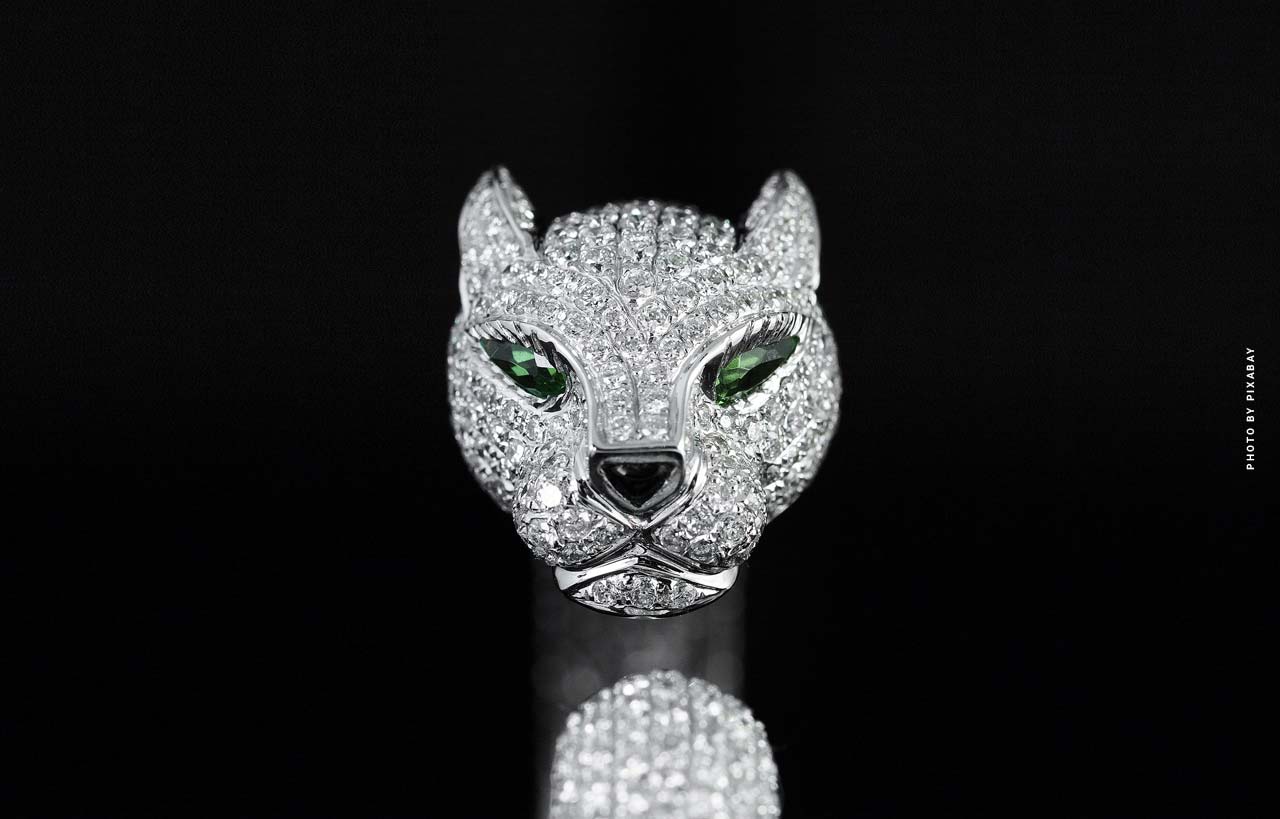
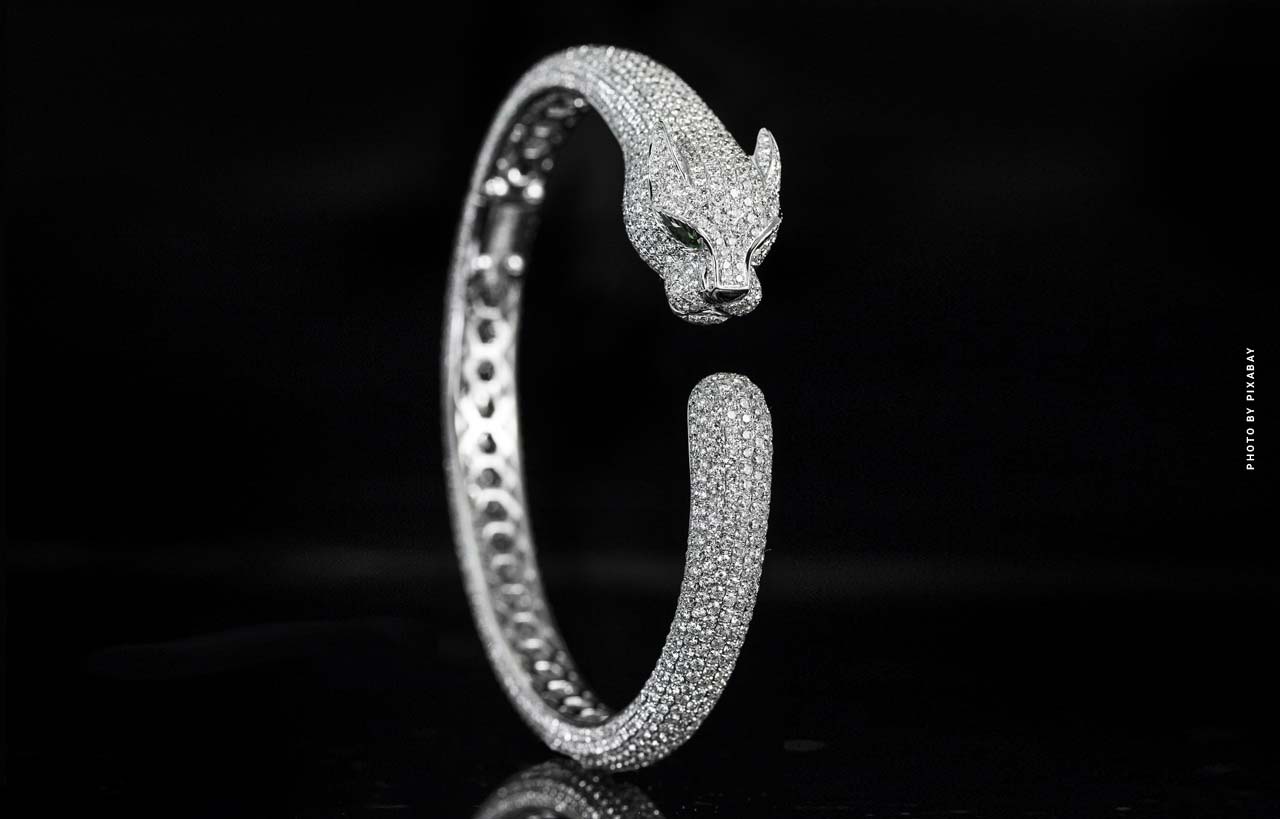
Why are diamonds so popular?
There are exclusive jewellery dealers and producers like Graff, Phillips but also De Beers. Nothing happens by chance, much of our life is subject to external influences. Here Alex Fischer gives many good examples. For example, the diamond ring, for the sweetheart.
De Beers is known worldwide for producing the finest engagement rings, wedding bands and other elegant diamond jewelry. In the 1960s, De Beers and its marketing team asked themselves, “How can we sell more diamonds? The idea, a marketing campaign that said, “If you’re a stickler and you really love your wife, give her a diamond ring.”
The campaign worked extremely well, so well that there was even a second edition: “Anyone who really thinks something of himself invests at least a month’s wages for his mistress.” This second campaign also worked extremely well. So De Beers went one step further: “If you really love your wife, you should invest 2-3 months’ salary!”
Since then, diamonds have arrived in society and are a part of pretty much every couple. This drove and still drives the value of diamonds even higher since then.
How is the value determined?
Every diamond is unique. They can be the same size, yet have extremely different values. The quality is measured by the 4C of the diamonds. This means that differences are formulated by “Carat, Color, Clarity and Cut”. They determine the quality and value of the diamond. Once you decide to actually buy diamonds, the tax-free appreciation also plays into it (check out our appreciation statistics later). The tangible asset with no maintenance costs is free of maintenance costs as long as safekeeping is solved.
Tip. Diamonds are excellent as part of your own portfolio. As we have described in the editorial Capital Investment XXL, a good portfolio should consist of one third each of fixed-income investments or securities, real estate and mobile assets, such as art, designer fashion or diamonds.
The advantages of diamonds as an investment:
- Protection (inflation, bank failures, stock market crashes and currency reforms)
- Anonymity of the buyer
- Worldwide convertibility
- Constantly available substitute currency
- Tax-free appreciation
- Investment in tangible assets without maintenance costs
- Prestige
Valuation & Diamond Certificate

When buying diamonds, you should always make sure that the investment diamonds have a certificate issued by a reputable and world-renowned institute:
| HRD | Hoge Raad voor Diamant | Antwerp – Belgium, New York – USA, Ramat Gan – Israel, Vicenza – Italy, Madrid – Spain, Istanbul – Turkey, Gaborone – Botswana, Dubai – United Arab Emirates, Hong Kong – China, Shanghai – China, Mumbai (Bombay) – India, Surat – India |
| IGI | International Gemmological Institute | Europe: Antwerp – Belgium, Italy – Rome and 5 other cities Middle East: Tel Aviv – Israel, Dubai – United Arab Emirates North America: New York – USA, Los Angeles – USA, Toronto – Canada Asia: Hong Kong – China, Shanghai – China, Bangkok – Thailand, Tokyo – Japan India: Mumbai (Bombay), New Delhi, Hyderabad, Kolkata, Surat, Ahmedabad, Thrissur, Chennai, Jaipur, Bengaluru |
| GIA | Gemological Institute of America | Antwerp – Belgium, New York – USA, Carlsbad – USA, Dubai – United Arab Emirates, Ramat Gan – Israel, Gaborone – Botswana, Johannesburg – South Africa, Tokyo – Japan, Bangkok – Thailand, Hong Kong – China, Mumbai (Bombay) and Surat – India, Singapore |
| DPL | Diamond test laboratory | Idar-Oberstein in Germany, especially for German investors |

Valuation
The performance potential of diamonds as an investment is generally influenced by the “4 Cs”.
|
Colour
– – Color |
For diamonds as an investment, you should pay attention to the color “River” or “Top Wesselton”. Important is the classification D, E, F or G.
|
|
Carat
– – Weight |
Since weight is a high priority in the performance of investment diamonds, it makes more sense to invest in a few large diamonds rather than many small diamonds as an investment. Experts recommend focusing on investment diamonds in stones of 0.5 carats and above.
|
|
Clarity
– – Purity |
Diamonds purchased as an investment should ideally be flawless (IF). Tiny inclusions (VVS I or VVS II) and small inclusions (VS I or VS II) are also still suitable as investment diamonds.
|
|
Cut
– – Ground |
Diamonds with exotic cuts are not as good for resale as common cuts. Experts advise to focus on diamonds with brilliant, oval, princess or emerald cuts.
|
Source: Wallstreet Online
The famous 4 Cs:
- Cut – the brilliant cut with 57 facets is considered the most beautiful.
- Carat – the heavier or larger, the better
- Clarity (purity) – the fewer inclusions, the purer
- Color – the rarer, the more expensive
Since the development of these four guideposts and criteria for the selection of diamonds as an investment, a fifth C has now also become established:
- Conflict – the more notorious, the more dangerous.
Statistics: Diamond production until 2020
Development and forecast of global diamond production from 2005 to 2020 (in millions of carats).
Source: Statista
Synthetic diamonds: Produced in the laboratory
Diamonds can be produced artificially by recreating the natural conditions of diamond formation as accurately as possible. The so-called synthesis requires extreme temperatures of 1,500 to 3,000 degrees Celsius and a pressure generation of approximately 55 to 60 kilobars. For comparison, your environment usually has around 1 bar. So diamonds need 60,000 times more pressure to form.
Temperature: 1,500 to 3,000 degrees
Pressure: 55 to 60 kilobar
The first synthetic diamond
Source: Alex Fischer Diamond as an investment
The first successful synthesis took place in the 1950s, but shortly after the turn of the millennium, diamonds could also be grown from the air for the first time with the help of a photon plasmatron. Initially, it was only possible to grow small diamonds due to the high costs involved. Thanks to today’s technology, however, it is now also possible to produce large diamonds in this way for little money.
Milestones:
- 1797: The scientific breakthrough
- 1926: Parson uncovers scientific error
- 1941: New experiments and first successes
- 1953: The first synthetic diamond
In Stockholm, the scientists of Allmänna Svenska Elektriska Aktiebolaget, or ASEA for short, independent of Hall and General Electronic Company, were also successful and were able to present their first synthetic diamond on February 16, 1953, after about four years of work. However, this achievement was not published until the 1980s.
The Korean company Iljin Diamonds entered the industrial market of diamond synthetics in 1988 thanks to a Korean employee who had formerly worked at GE and shared their trade secrets with Iljin Diamond and numerous Chinese companies.
Diamonds are considered the most precious stones in the world and have occupied mankind since their first discoveries far in the past. But although scientifically and historically a lot of information about diamonds has been brought to light, outside of connoisseur and enthusiast circles, few know anything about the formation and history of these precious stones. From the original from the earth to the synthetic diamond – here you will learn everything!
Diamond: Name Origin, Meaning & Synonyms
Diamonds as an investment, that is an extensive topic. First of all, at the beginning are asked pretty basic questions, questions like:
- What is the difference between brilliant and diamond?
- What is the cost of 1 carat diamond?
- How and where are diamonds created?
- What is a carat diamond?
Let’s get started! Diamonds as an investment, first the definition: The diamond carries numerous synonyms, even if most of them are ancient and rather unknown in today’s usage. The term has its origin in the Greek ἀδάμας – adámas – which means “indomitable” and refers to the hardness of this stone. Furthermore, the following terms are known:
- Adamant
- Adamas
- Anachites
- Diamas
- Ira’s
- Itam
Lyrically, the designation of the diamond as the “moon of the mountains” finds particular appeal. The smallest visible diamonds are called “grains of salt”, whereas precious stones with a color gradient from blue-white to yellow are known as “prernier”. Furthermore, there are special names for base diamonds, which are opaque in their transparency:
- Ballas
- Bort
- Carbonado
But diamonds are also subdivided in cut form. According to their cut form, a distinction is made between brilliant, diamond, pointed stone and table stone.
Mineralogy: The element diamond
From a purely scientific point of view, a diamond is the interaction of its properties. Important factors are, for example, the Mohs hardness – a relative hardness value used for minerals and named after the German mineralogist Friedrich Mohs -, the luminescence – the glowing of a substance at unchanged temperature – and opacity, i.e. light transmission, as well as its tenacity – the behaviour of minerals when scratched and bent. Incidentally, diamond is the record holder as the best known thermally conductive mineral in the world.
Classification, Structure & Crystallography
- Mineral Class: Elements
- Element: Carbon
- Chemical formula: C
- Mass: 100%
- Atoms: 1
- Atomic mass (u): 12.0107800
- Crystal system: cubic
- Common crystal faces: {111}
Physical properties
- Mohs hardness: 10.0
- Density (g/cm³): 3.515
- Fissility: {111} perfect
- Fracture: conchoidal
- Tenacity: brittle
- Colour: colourless, various foreign colours
- Line colour: white
- Opacity: transparent to partially transparent to translucent
- Gloss: Diamond gloss, grease gloss
Chemical behaviour:
- Graphite is formed when heated in the absence of air
- At high temperatures reactions with hydrogen, oxygen and fluorine
- Easily soluble in molten carbon-soluble metals
Other features
- Melting point (at degrees Celsius): 3,500
- Thermal conductivity (W/(m – K)): 1,000-2,500
- Luminescence: fluorescent
- Radioactivity: none
- Compression modulus (GPa): 442
- Unstable: Acids and alkalis
Raw stones: Direct from the mine
Colour variety due to additives & defects
Although the “real” diamond is colorless in its natural state, there is quite a variety of colors in the diamonds found so far. Various additional elements that can influence the growth of a diamond, for example nitrogen, sometimes result in many different shades of colour. Nitrogen produces a yellow hue, while the addition of boron produces a bluish hue. In general, all shades of yellow, gray, green, and brown, as well as color changes within a stone, are dominant and therefore most common. The diamonds with pure and intense colors are therefore considered particularly beautiful and especially rare. In English these color diamonds are called “Fancy Diamonds” or short: Fancys and it is distinguished between seven Fancys:
- Canary yellow & orange (addition of nitrogen)- famous example: the Tiffany
- Brown (defects in the crystal lattice) – famous examples: the Lesotho & the Earth Star
- Blue (addition of boron) – famous example: the Hope diamond
- Green (radiation defects) – famous example: the Dresden diamond
- Red (crystal defects) – famous examples: the Red Shield & the Red Diamond
- Pink/Pink (crystal impurities) – famous examples: the Daya-I-Noor & the Steinmetz Pink
In addition, there are countless color variations, for example, also gold, up to black. Structural features and irregularities within the structure of a stone can also cause color changes, in technical language these are also called “Grainings”. These can occur as lines, angles and curves in the crystal, but the most common are very fine lines about a few hundredths of a millimetre thick and brownish in colour. Due to special light refractions, it sometimes happens that the diamond takes on a pink color.
The biggest diamond mine in the world
Statistics: Diamond production until 2020
You can find more statistics at Statista
Diamond cut: 21 types
Diamonds are known to have the unique ability to refract light in such a way that they sparkle intensely, from all angles. When it comes to the cut of diamonds, there are different shapes. These include round cut (also known as brilliant cut), heart, oval, marquise, radiant, princess and many more. The cut quality determines the value of a diamond significantly. When determining value, it’s all about how well a diamond’s facets interact with light.
- Diamond cut (external)

The history of diamonds: from India to the world
The first confirmed discovery of a diamond is traced back to India and is estimated to have occurred around 4,000 BC. In the ancient writings and temples of India, there are repeated references to diamonds, their findings and their use. It is said that the priests of the time carried shields made of gold, each with a diamond embedded in the middle. On the basis of drawings and replicas, however, the size of this shield jewellery suggests, according to present-day knowledge, rather rock crystals. However, India is undoubtedly the origin of the diamonds. It is assumed that Phoenician ships brought the Indian diamonds to the wide world in the second century before Christ. The most beautiful, largest and most magnificent of all stones, however, remained for a long time in the possession of the local princes and adorned their treasuries. It was not until the beginning of the 18th century that the occurrence of diamonds in India slowly declined.
The first reported discovery of a diamond, on the other hand, came from Indonesia. In the 6th century AD, some diamonds were found there, but overall the yield was small and the transport was rather complex under the conditions of the time, which is why the stones were dismissed as insignificant.
Diamond rush in South America and South Africa
In South America, which was under Spanish and Portuguese rule in the 17th and 18th centuries AD, prospectors stumbled upon diamonds in the Amazon region of what would later become Brazil, just a few decades after the diamond deposits in India had subsided. Once knowledge of diamonds spread, countless adventures traveled to South America in search of wealth. For over 100 years, South America supplied the world with diamonds. Nowadays, Brazil still supplies diamonds to the world, but nowhere near as many as in the days of the so-called “diamond smoke”.
Around 1970, a new diamond deposit was discovered in South Africa and, after an initial frenzy, was brought under control in terms of mining and trade. In the first years after the turn of the millennium, further deposits were found in Africa, including Angola, Tanzania, West Africa, Zaire and Central Africa.
Other occurrences & the oldest Dimanant in the world
Diamonds were first mined in Russia in the 1950s. Furthermore, at this time there were diamond discoveries in Australia, Borneo, Guyana and Venezuela.
Australia made history in 2007 as the place where the world’s oldest diamonds were found. Researchers estimate the microscopic stones, which are invisible to the naked eye, to be more than 4 billion years old. Accordingly, these findings are almost as old as the planet Earth itself. Such an age allows conclusions to be drawn about the early history of the earth, but this is not the only reason why these Australian diamonds are controversial and hotly debated – until their discovery, the oldest diamonds were only dated back to about 3.3 billion years.
Emergence under natural conditions
In nature, diamonds are only formed under very specific conditions. The two decisive factors here are temperature and pressure. Science proves more precisely that diamonds can only be formed under temperatures of 1,250 to 1,500 degrees Celsius and in combination with extreme pressure of 100 to 150 kilobars. This limits the formation sites on earth to depths of 150 km in the upper mantle. Tectonic movements, i.e. the movement of the earth’s plates and crusts against each other, change the basic magma in the deeper layers of the earth. This in turn changes the deep rocks and produces new, metamorphic rocks, i.e. rocks whose shape has changed. Diamonds are an accompanying mineral of this transformation. Researchers have been able to narrow their guesses about the exact formation of diamonds within the tectonic process to three types of chemical reaction, the majority considering a simple reduction of carbon dioxide (CO2) to be the most likely.
Crystallization – the process by which crystalline structures form – is extremely slow, whereas the cooling of the freshly formed diamonds is extremely rapid. The rapid cooling prevents the diamond from turning into graphite. Under natural circumstances, the diamonds only reach the earth’s surface through volcanic eruptions, as the lava lumps take the surrounding deep rock with them. The mixture of lava and rock then forms kimberlite – diamond-bearing rock consisting of solidified volcanic material – and lamproites, which are where a diamond is found, although not its place of origin.
Synthetic diamonds – produced in the laboratory
Diamonds can be produced artificially by recreating the natural conditions of diamond formation as accurately as possible. The so-called synthesis requires extreme temperatures of 1,500 to 3,000 degrees Celsius and a pressure generation of approximately 55 to 60 kilobars.
The first successful synthesis took place in the 1950s, but shortly after the turn of the millennium, diamonds could also be grown from the air for the first time with the help of a photon plasmatron. Initially, it was only possible to grow small diamonds due to the high costs involved. Thanks to today’s technology, however, it is now also possible to produce large diamonds in this way for little money.
1797: The scientific breakthrough
For industry, the scientific breakthrough for the use of diamonds came in 1797, when it became known that diamonds are made of pure carbon. Attempts were made to reproduce the crystalline structure of diamonds by means of different, cheap carbon variants, until finally the first artificially produced diamond could be recorded. The Scottish chemist James Ballantyne Hannay thus made a name for himself in the late 1880s, closely followed by the equally successful chemist Ferdinand Frédéric Henri Moissan from France. Both scientists used different methods and there were many unsuccessful imitators in the 1890s. At the beginning of the 20th century, the British chemist Sir William Crookes was able to demonstrate his first successes based on Moissan’s findings, and Otto Karl Ruff from Germany followed his example barely 16 years later. Finally, in 1926, the American Dr. J Willard Hershey succeeded in producing his first diamond synthetically. This diamond can still be admired today in the McPherson Museum in Kansas.
1926: Parson uncovers scientific error
The Anglo-Irish scientist and engineer Sir Charles Algernon Parsons devoted almost 40 years of his life to the synthetic production of diamonds. He undertook numerous experiments and kept accurate records of his methodology and experiments based on the publications of Hannay, Moissan and Ruff. Then, in 1928, he had it published in his name that he was firmly convinced that not a single diamond had been synthetically produced up to that time and that the successes of his predecessors were merely synthetically produced spinel – a common, cubically crystallizing, transparent mineral. The fact that not one scientist in the world had succeeded in creating a synthetic diamond since 1926 certainly confirms this statement.
1941: New experiments and first successes
After Parson’s scandalous statement, diamond synthesis was not resumed until 1941. The American conglomerate General Electric Company (GE) joined forces with Norton and a few other companies and initially focused on the basic conditions for diamond formation in nature, namely high temperatures and extreme pressure. After the project had to be paused due to the First World War, the American Howard Tracy Hall and other scientists joined forces to form a team of experts in 1951. On December 16, 1954, Hall succeeded in creating the world’s first truly synthetically produced diamond, and after the process proved recipiable, Hall’s findings were published in the British science journal Nature. A few years later, Hall created new machinery that simplified the creation of diamonds and was awarded the American Chemical Society Award for Creative Innovation.
Scientists in the competition
In Stockholm, the scientists of Allmänna Svenska Elektriska Aktiebolaget, or ASEA for short, independent of Hall and General Electronic Company, were also successful and were able to present their first synthetic diamond on February 16, 1953, after about four years of work. However, this achievement was not published until the 1980s.
The Korean company Iljin Diamonds entered the industrial market of diamond synthetics in 1988 thanks to a Korean employee who had formerly worked at GE and shared their trade secrets with Iljin Diamond and numerous Chinese companies.
Differentiation between natural and synthetic
In general, natural and synthetic diamonds can be easily distinguished, because natural or “real” diamonds show an uneven growth, the growth conditions of diamonds in the laboratory, on the other hand, are extremely uniform. With the help of artificial impurities, however, nature can be imitated more and more, so that a distinction is nowadays hardly to impossible for laymen as well as experts without special measuring devices.
Use of diamonds in everyday life
Unlike the original occurrence of diamonds, the art of cutting the precious stones does not originate from India itself. It is assumed that first of all the Venetians dared to cut diamonds in the 15th century after Christ and brought the art of cutting from there to India. Via Paris, the knowledge about the processing of the valuable stones reached Antwerp and Amsterdam. Even today, Antwerp is one of the most important cutting centers in the world – it shares the top position with Tel Aviv and New York, while only smaller stones are cut in India.
Diamonds are generally used as abrasives and for setting drill bits and saw blades. Another large area of application is, of course, the jewelry industry.
Synthetically produced diamonds are used primarily in research, but also to a significant extent in special coatings, laser technology and electronics, or more precisely in the semiconductor sector.
Legendary diamonds
Throughout the history of diamonds, some individual pieces have left a special imprint on our timeline. Others are the subject of numerous legends and sagas. Many have been hotly contested or are found today as crown jewels in the possession of royal families.
Diamonds – We have collected the most expensive & biggest gemstones in the world for you here! The top 10 most expensive diamonds and the top 23 heaviest diamonds by carat. Which stone is the most expensive? Which stone is the most valuable? Large rough diamonds like the “Cullinan stone” has been cut from 3,106 carats to 9 foundation stones and 98 smaller stones. The current value is up to $2 billion. Stones like the “Koh-i-Noor” diamond is owned by the English monarchy and to this day is unmeasurable in value and still in first place.
- Article: The most expensive & biggest diamonds in the world
The blue Wittelsbacher
This blue color diamond is world famous and its personal history can be traced far back, to India in 1666. In 1722, the “Blue Brilliant”, as it was called at the time, became part of the imperial crown of Maria Amalie Josefa Anna of Austria. From 1806 to 1918 the famous blue diamond was in Bavarian hands as a crown jewel under King Ludwig III. In the winter of 2008, the at least 4-carat diamond was purchased at auction for a total of 18.7 million euros, making it the most expensive diamond purchased at auction until November 16, 2010. The buyer of the blue Wittelsbacher was the jeweler Laurence Graff, who had his latest acquisition directly recut in favor of the color intensity. A scandalous act which led to the stone being renamed the “Wittelsbach Graff”. By the way, the following diamond achieved the highest price within a campaign was a pink diamond for more than 46 million dollars – also paid from the wallet of Laurence Graff.
The cursed Koh-I-Noor
The colorless diamond Koh-I-Noor comes from an Indian legend that says that Koh-I-Noor brings death to all men who carry it with them. It passed through numerous hands until it became the property of the British East India Company in 1849. On the Company’s 250th anniversary, the then 186-carat diamond, which is still considered the largest diamond in the world, was honorably and formally presented to Britain’s Queen Victoria. She promptly had the stone recut, which reduced its size to about 109 carats. Since 1911, the Koh-I-Noor has been part of the Queen’s Crown and can still be seen today in the Tower of London along with the other British Crown Jewels.
The legendary Hope Diamond
This legendary diamond of about 45 carats also comes from India and is said to have been previously set into the statue of an Indian deity and is considered cursed. Between 1640 and 1667, the blue stone is said to have been sold to the country of France by a French adventurer; the adventure met its death shortly afterwards. In 1668 it was worn by the kings Ludiwg XIV and later Louis XVI. The Sun King had the stone re-cut and henceforth gave it the name “Le Bleu de France”. Legend has it that the diamond’s curse passed to its next owner, Queen Marie-Antoinette, causing her death. After the French Revolution, the stone was considered lost for years. Its next known owners were the English King George IV and the banker Henry Philip Hope, whose family remained in possession of the diamond for over 50 years, thus giving the Hope Diamond its name. The Hope diamond left the family after many disputes and finally came into the hands of the American Evalyn Walsh McLean, who kept the diamond with her until 1947 and left it behind after her own death after a total of over 30 years and many strokes of fate within her family. The new owner, an American jeweler named Harry Winston obtained the blue fated stone and promptly bequeathed it to the Smithsonian Institution. The magnificent stone can still be admired today at the National Museum of Natural History in Washington, D. C.
Pretty in Pink: the Darya-I-Noor
Pink and rose diamonds in particular are rare, but the Darya-I-Noor is perhaps the most famous of them all. The pink diamond Darya-I-Noor was recovered from the same mine as the colorless Koh-I-Noor and its name means “ocean of light” in Indian. It is said that many oriental rulers lost their lives because of it. Nowadays it is among the Iranian crown jewels.
Largest diamonds in the world by weight in carats
You can find more statistics at Statista
Diamonds in the magazine: More articles
- Graff Jeweller: The Diamond Dealers
- Tiffany & Co: Bracelets
- Most expensive jewellery in the world
Graff Jeweller: The Diamond Dealers
Graff Jeweler – Finding the most valuable diamonds is part of their job. If you find a big diamond, you can get rich in one fell swoop. No way! Yes there is! The L’Incomparable diamond necklace contains one of the most valuable diamonds in the world. The necklace is worth $55 million with the L’Incomparable diamond, because it is the largest, inside flawless diamond in the world. Hard to believe but was. A little girl discovered the stone, amidst mining debris. In 1980, she found the L’Incomparable diamond in the overburden of the mine in the Democratic Republic of Congo: 407.48 carats. From it, the most exclusive pieces of jewelry are made, crafted by Graff. Right at the beginning we therefore show the cutting of the “Graff Lesedi La Rona”, you will see how a 1,109 carat rough diamond is transformed into an ultra-exclusive 302.37 diamond by Graff! The world’s largest, purest emerald diamond ever certified by the Gemological Institute of America (GIA).
Tiffany & Co: Bracelets
Tiffany & Co. rings & bracelets – The luxury brand Tiffany & Co. has been making women’s hearts beat faster for over 180 years. With breathtaking engagement rings, sparkling pearls and charming necklaces, the brand enchants its customers anew every year. The brand, which once began modestly on the streets of New York City, can now be found all over the world. Its international success has also ensured that it now offers perfumes and other accessories in addition to sparkling jewellery. We have collected the latest creations of the brand for you here. At the end you will also get an exclusive insight into the private suite for VIP guests, where only the most expensive pieces of jewellery are sold.
Most expensive jewellery in the world
The most expensive jewelry in the world: diamonds, rubies, gold, platinum made by the best jewelers in the world. Graff, in particular, plays a huge role in the ranking of the most valuable jewelry. Diamonds are by far the most popular and well-known gemstone for lovers, jewelry lovers but also collectors. Diamonds are the hardest mineral on earth, so they can be used in jewelry for literally centuries without getting scratched. Did you know. The only mineral that can scratch a diamond is other diamonds! Diamond is therefore one of the most sought after mining products. Just like gold.
There is no precious metal in the world more sought after than gold. The famous “yellow metal” has been the standard by which wealth is measured for centuries, Even today, gold bullion is a primary means of private investment and wealth protection. Welcome to the world of gold, platinum, rubies and diamonds. The most expensive jewelry in the world: diamonds, gold & platinum!
Most expensive jewellery


